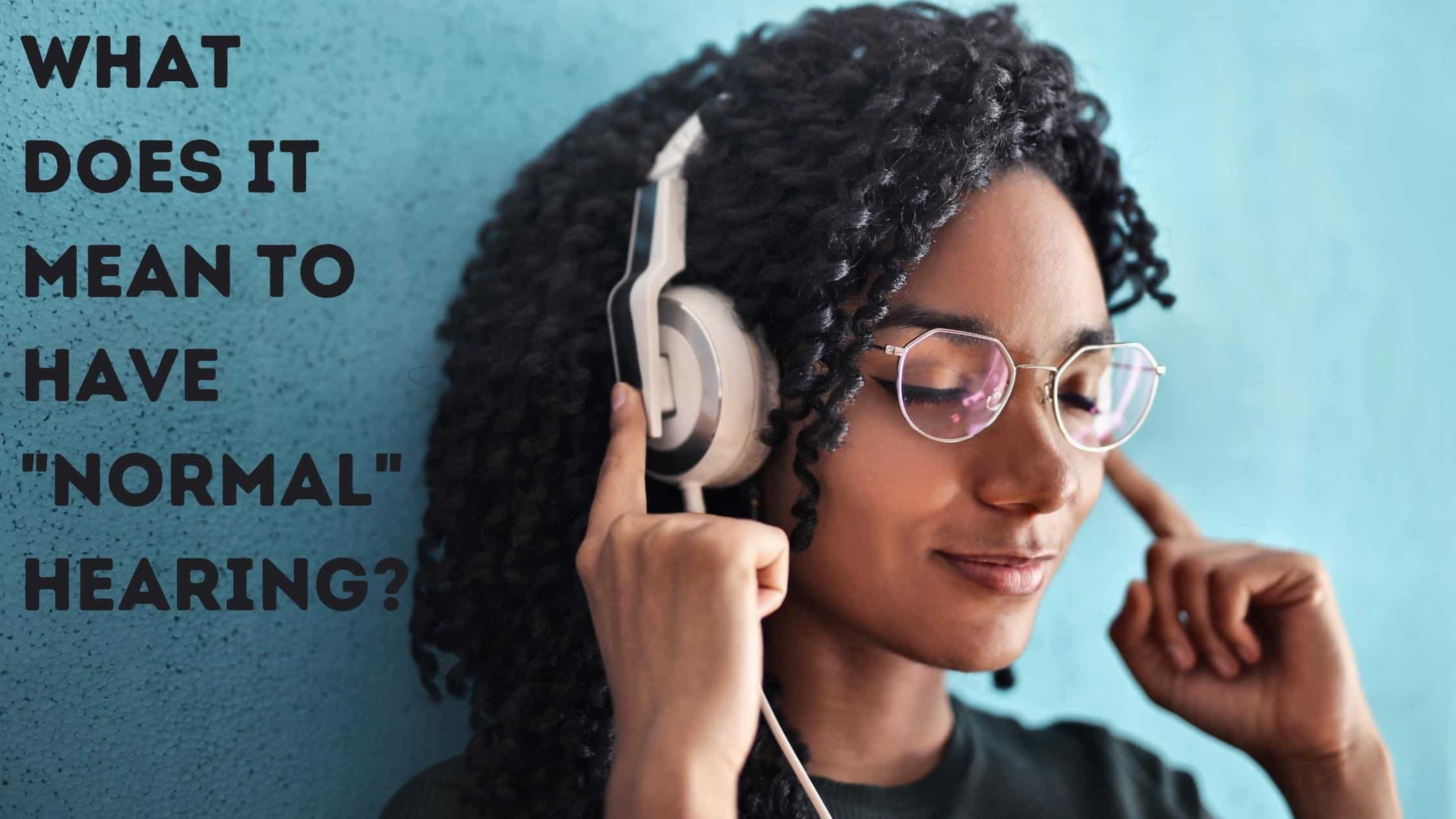
We can’t help going through life continually comparing our own collection of information, life experiences, values, and viewpoints to the “normalcy” of others. For many things in life, ‘normal’ is in the eye of the beholder.
However, as hearing loss is a scientific fact, we can come to a generally accepted conclusion as to what ‘normal hearing’ looks like.
You’re probably curious about what it means to have normal hearing, and these are essential things to consider as you prioritize your hearing health. Let’s take a look at how the hearing health community defines hearing loss, as well as what you can do to ensure that you and your loved ones receive the treatment you require.
What is the definition of normal hearing?
Decibels are the units used to measure sound (dB). A person with normal hearing can notice the weakest sound at 0dB, almost utter silence. Adult hearing ability is defined as hearing sounds with a frequency range of 0 to 25 dB. Hearing softer sounds such as leaves rustling, a ticking watch, and sounds in a silent room are examples of this. Hearing sounds between 0 and 15 dB is considered typical for a youngster.
How do we know if our hearing is normal?
The first thing you should do is have your hearing tested. Hearing tests are performed by hearing healthcare professionals like us who employ a noninvasive and painless technique to determine whether or not you have a hearing loss.
Listening to different tones played at varied volumes (and pitches) and responding to what you hear is part of this process. This determines your hearing threshold or the quietest sound you can hear at any frequency or pitch. These findings will reveal any degree of hearing loss you may have in both ears.
The levels of hearing loss
Hearing noises louder than 25dB with difficulty implies some degree of hearing loss. The various degrees of hearing loss are classified as follows:
- Mild: 25 – 40 dB.
- Moderate: 40 – 55 dB.
- Moderately Severe: 55-70 dB.
- Severe: 70 – 90 dB.
- Profound: above 90 dB.
It is critical to have your hearing tested as soon as possible to determine your hearing capability in both ears.
How do you know if you have hearing loss?
It’s critical to recognize the signs of hearing loss so you can take action as soon as you notice any changes in your hearing.
The following are examples of common signs:
- Tinnitus: is a buzzing, ringing, or clicking sound that can be heard in one or both ears.
- Individual words are difficult to hear because sounds are slurred or muted.
- Raising the volume on a TV louder than others
- Requesting that people speak louder, slower, and repeat themselves frequently
- Being able to hear better in one ear than the other
- Lip reading to keep up with the conversation
- Having concern or stress about having social interactions.
These symptoms can range from moderate to severe, and they can have a substantial impact on communication. Restricted communication can hurt one’s health and well-being by affecting relationships, job performance, and social withdrawal. If left untreated, hearing loss can lead to a host of other health issues such as cognitive decline, a higher risk of injury, and depression. To alleviate symptoms and enhance hearing health, people with hearing loss should seek treatment as soon as feasible.
Help is on the way
Making an appointment for a hearing test is the first step toward prioritizing your hearing health. Hearing aids are the most frequent treatment for hearing loss, and this provides enough assistance, allowing you to hear better in any of the situations you encounter. Hearing aids have benefited from substantial innovation in recent years, resulting in a diverse range of solutions, styles, and functions that are simple to integrate into daily life. It’s never too late to treat your hearing loss. To set up a consultation, contact us today!
